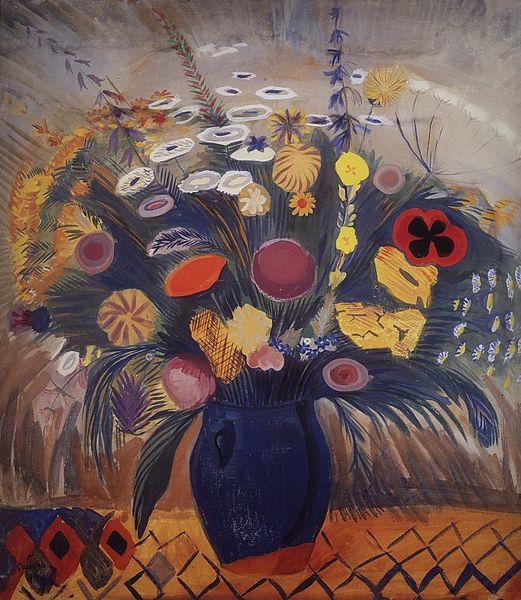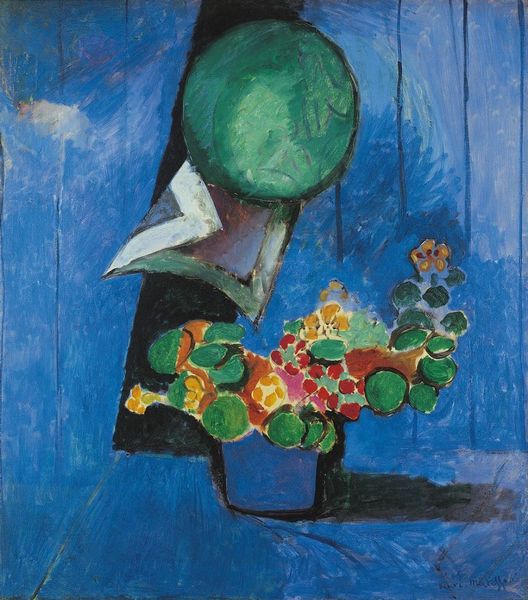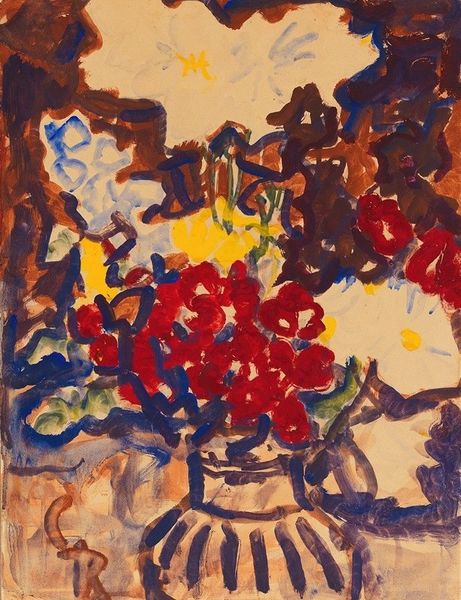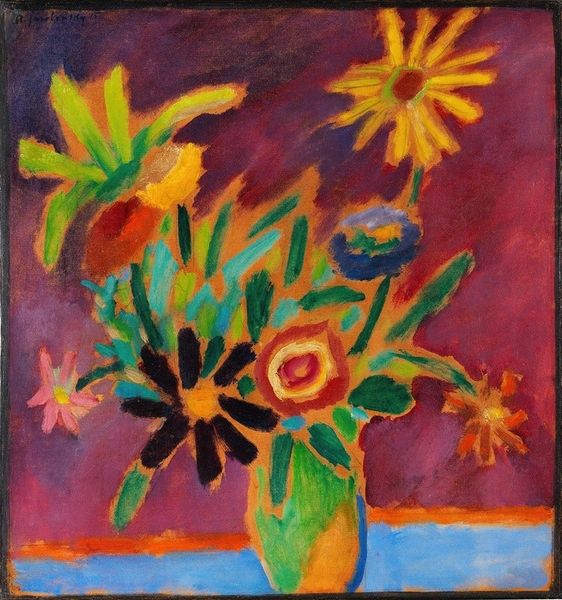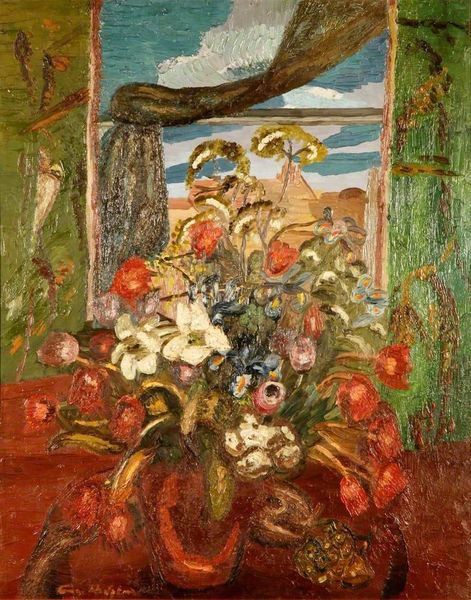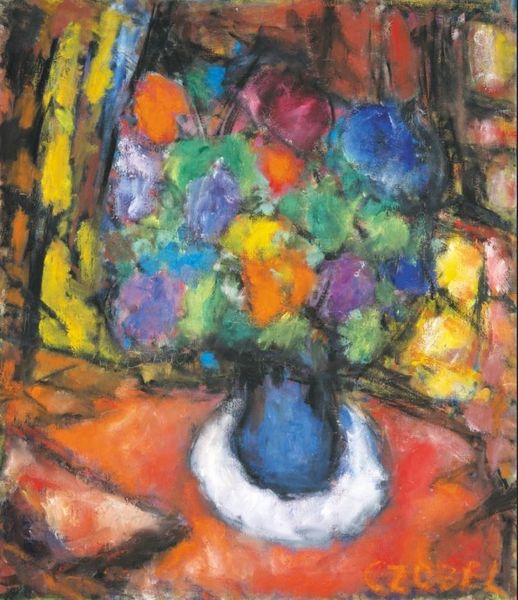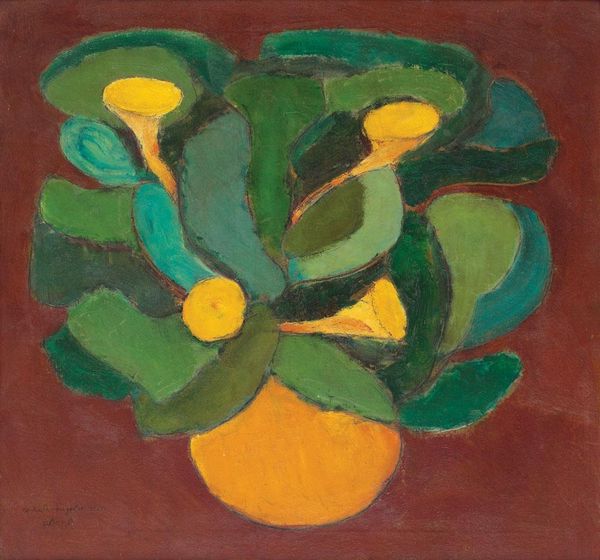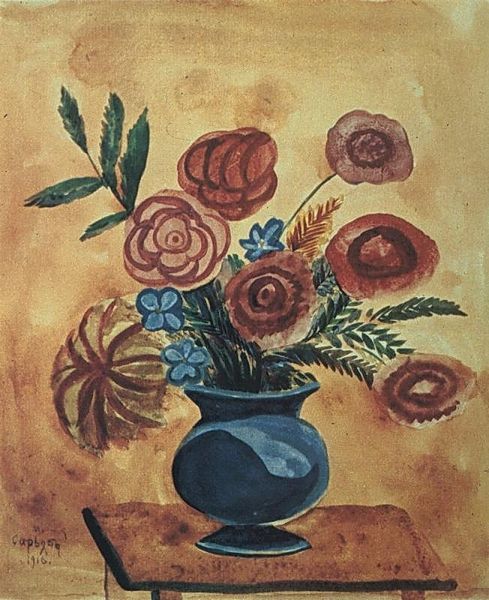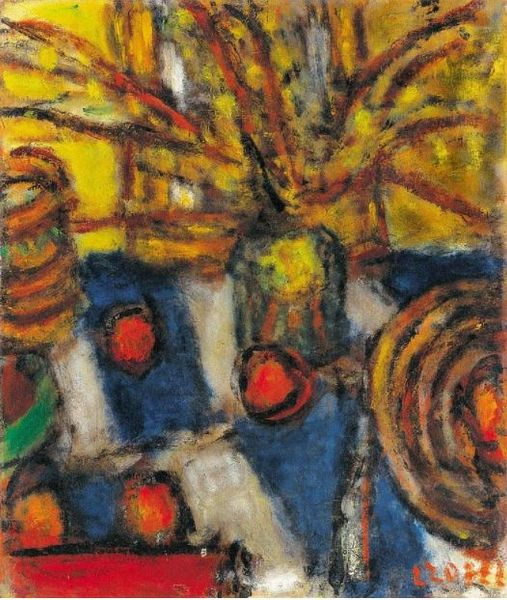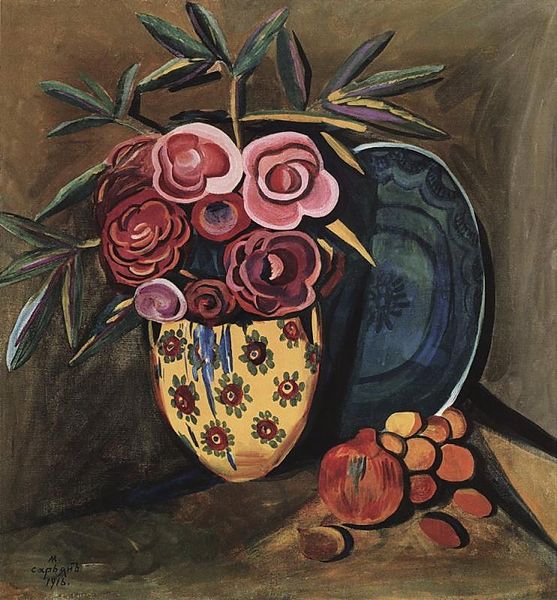
Dimensions: 83 x 73 cm
Copyright: Public domain US
Editor: We’re looking at “Yellow Flowers,” an oil painting from 1914 by Martiros Sarian. It's quite striking; the bold, somewhat geometric shapes of the flowers against the darker background give it an almost decorative feel. What strikes you most about it? Curator: I'm immediately drawn to the socio-political context in which Sarian was working. This was just before the Armenian genocide. Do you see how the bright, almost aggressively joyful colors of the flowers could be read as a form of resistance, or perhaps a desperate attempt to hold onto beauty in a world rapidly descending into darkness and war? Editor: That's a perspective I hadn't considered. So, you're suggesting that the seemingly simple still life could actually be a powerful statement about the artist's cultural background? Curator: Precisely. Think about the role of art within the Armenian diaspora, then and now. It became, and continues to be, a vehicle for preserving cultural memory and challenging dominant narratives that deny or erase the Armenian experience. The bouquet is also a classical and conventional theme of painting, and thus Sarian can show and hide. It makes you think, doesn't it? How museums, galleries and artistic traditions help define this “public” space for this kind of work. Editor: Absolutely. It really changes how I view the painting, moving it from a beautiful arrangement of flowers to something much more layered and meaningful. Curator: The "naive art" aesthetic might seem simply charming, but look closer at the deliberate choice to represent reality in a stylized way. Sarian reclaims agency over representation. What do you think is the impact of seeing this at auction, or a private collection, versus a museum? Editor: Well, in a private collection, it becomes more about individual taste and ownership. A museum setting provides that cultural and historical context we were just discussing, which shapes how we perceive the piece. Seeing it here now makes me wonder about other seemingly simple artworks and what histories they might be concealing. Curator: Exactly, I hope you see now it's the socio-historical conditions of production that also makes the reception itself very fraught and rich.
Comments
No comments
Be the first to comment and join the conversation on the ultimate creative platform.
